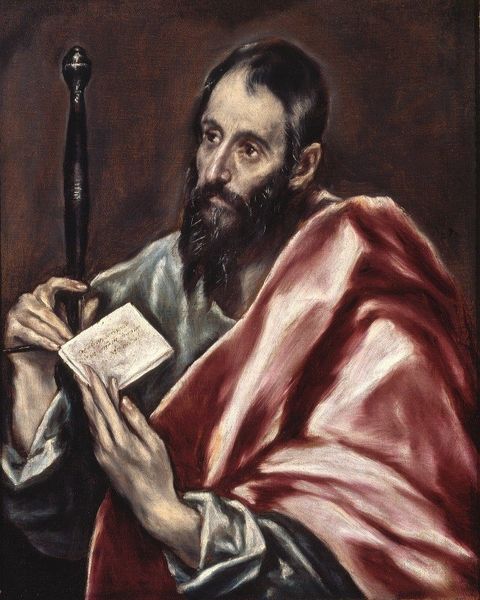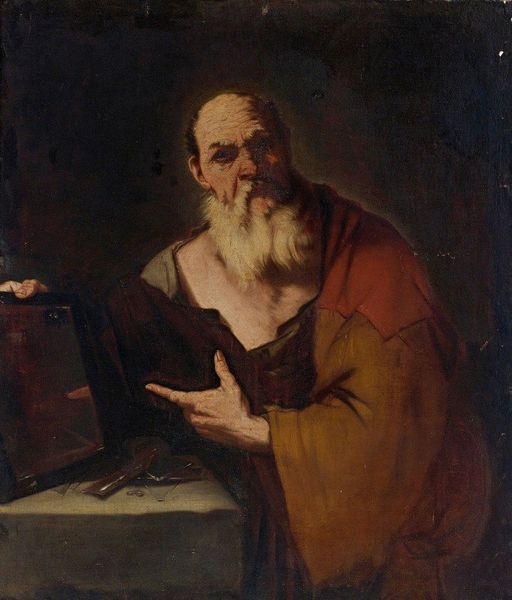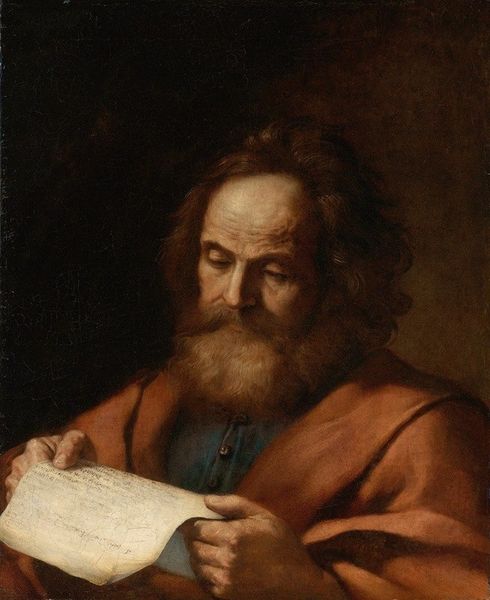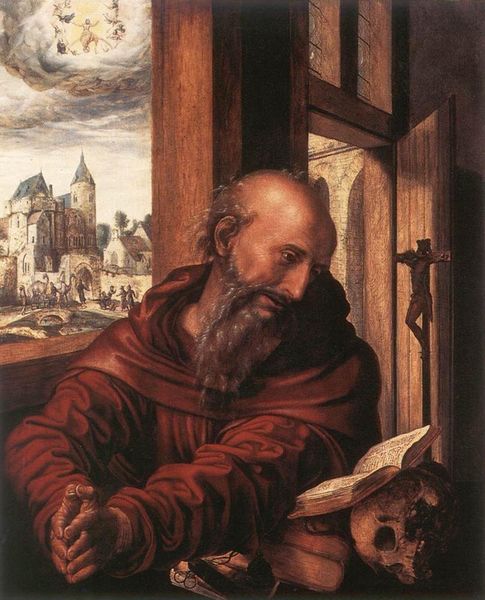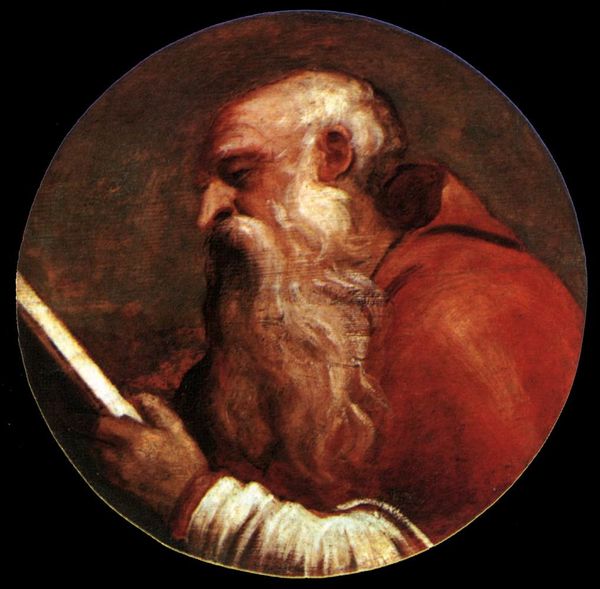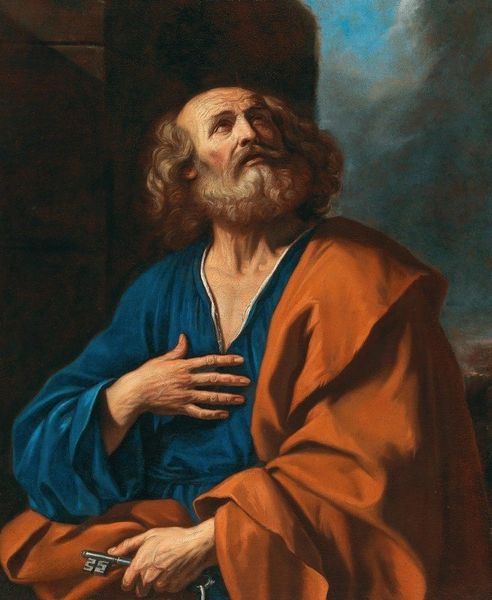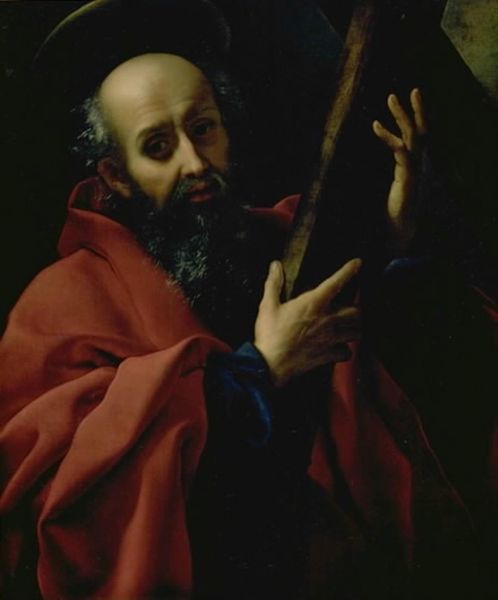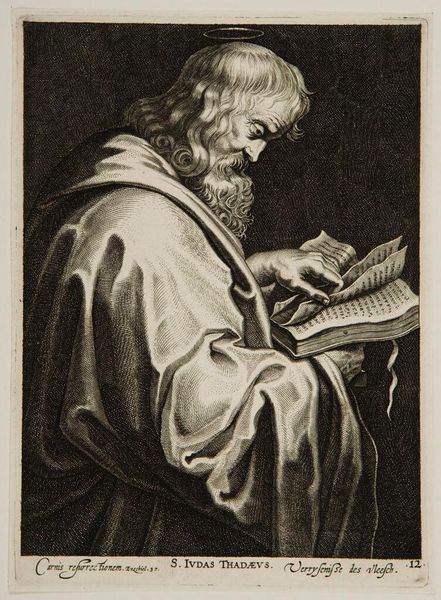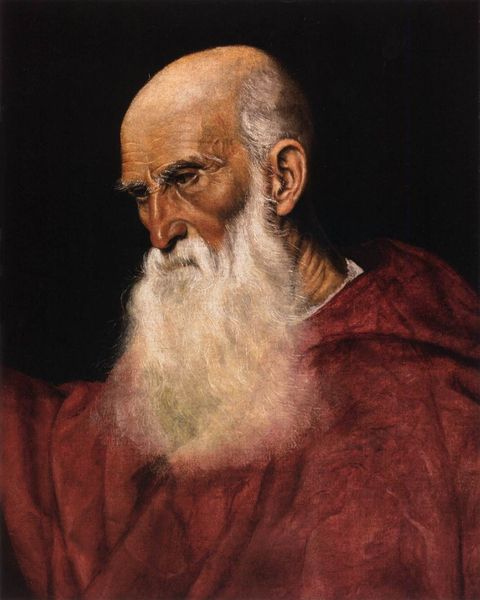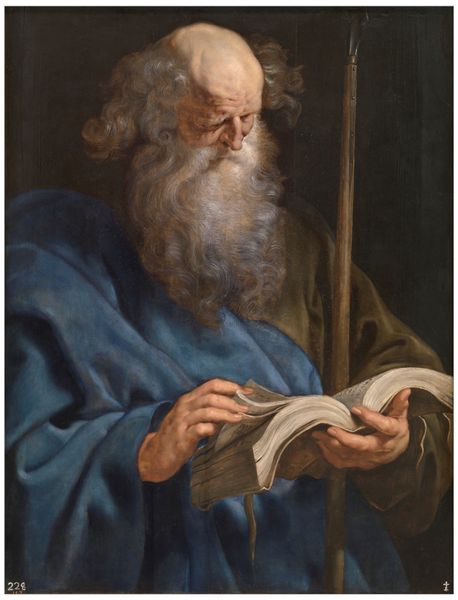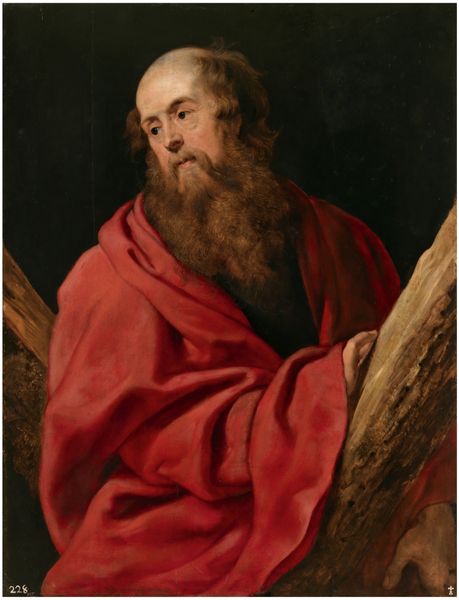
painting, oil-paint
#
portrait
#
baroque
#
painting
#
oil-paint
#
history-painting
Copyright: Public domain
Curator: Let's spend some time with this arresting portrait of Saint Paul. The Italian Baroque painter Guercino offers a compelling vision, doesn't he? Editor: He does! My immediate feeling is one of intense contemplation. The stark lighting really emphasizes the gravity etched on his face. It's a beautifully moody piece. Curator: It certainly is. There’s a strategic deployment of tenebrism there; a stark contrast between light and shadow heightening the drama, typical of Baroque painting, drawing your eye to his thoughtful, downturned gaze, deeply engrossed, it appears, in study. The way the crimson robe is draped suggests the weight of his responsibilities as an Apostle. We can trace the origins of this depiction of Saint Paul back to certain key theological and philosophical tensions arising at that moment in European history. Editor: And that sword, right there in the front… Isn't it interesting how it practically bisects the composition? This is somebody not afraid to confront an opponent, someone actively thinking in a moment of pause. A kind of… poised energy? The textures seem almost tactile – that parchment he’s holding seems about to crinkle at any moment. Curator: Exactly. That sword symbolizes his martyrdom, but metaphorically also the power of the Word as a weapon. What's remarkable, culturally speaking, is how Guercino encapsulates a pivot; it reflects the shift in European intellectual life from the Medieval Scholasticism to Reformation ideology where close readings and subjective interpretation became the cornerstones of emergent religious identities. The painting captures a critical transitional moment in which we grapple with how to balance knowledge, faith, action. Editor: I get all that! But beyond symbolism and academic analysis, I like his brow...the lines around his eyes, the imperfect angle of the book in his hands. It makes him feel palpably human. It makes the lofty issues you've discussed so beautifully feel accessible, rather than intimidating. Curator: A crucial tension—between accessible experience and canonical authority. I completely agree that the intimate perspective adds another level of insight into the anxieties inherent in grappling with emerging doctrines in early modernity. It invites critical discussions about individual identity in relationship to traditional forms of communal meaning. Editor: And for me that’s what makes this image of Saint Paul so enduring, so beautiful. It inspires me. Curator: It is quite an evocative testament. Thank you for sharing your thoughts.
Comments
No comments
Be the first to comment and join the conversation on the ultimate creative platform.
